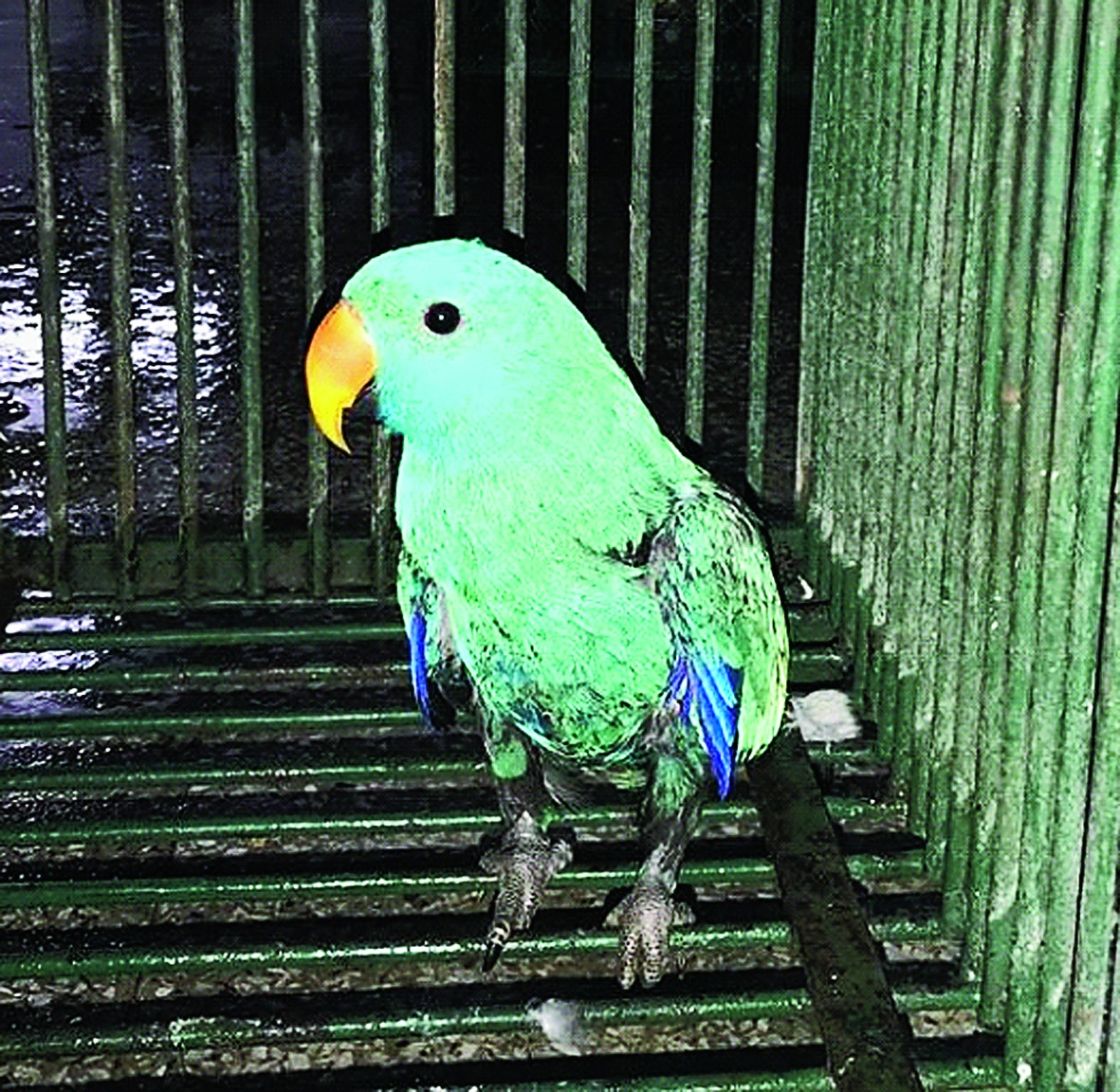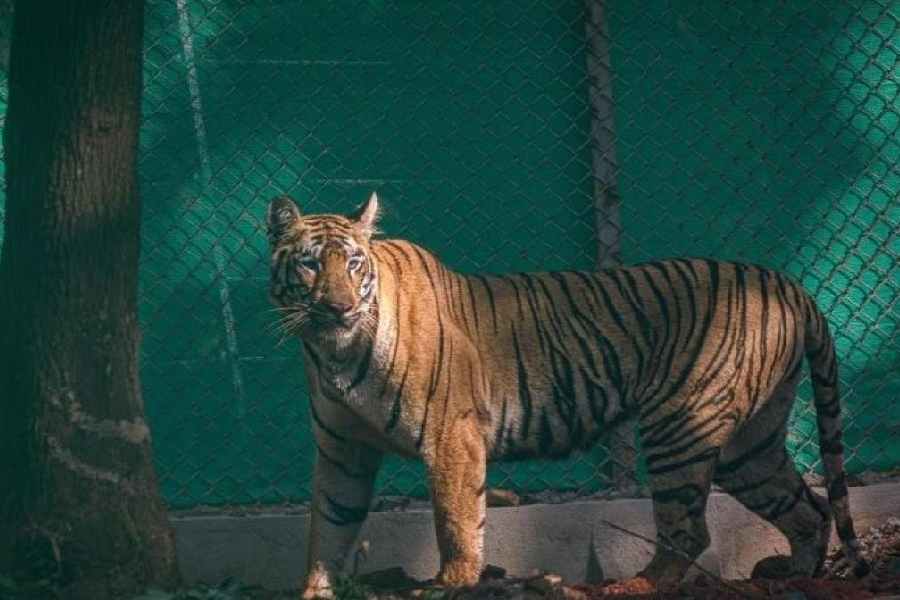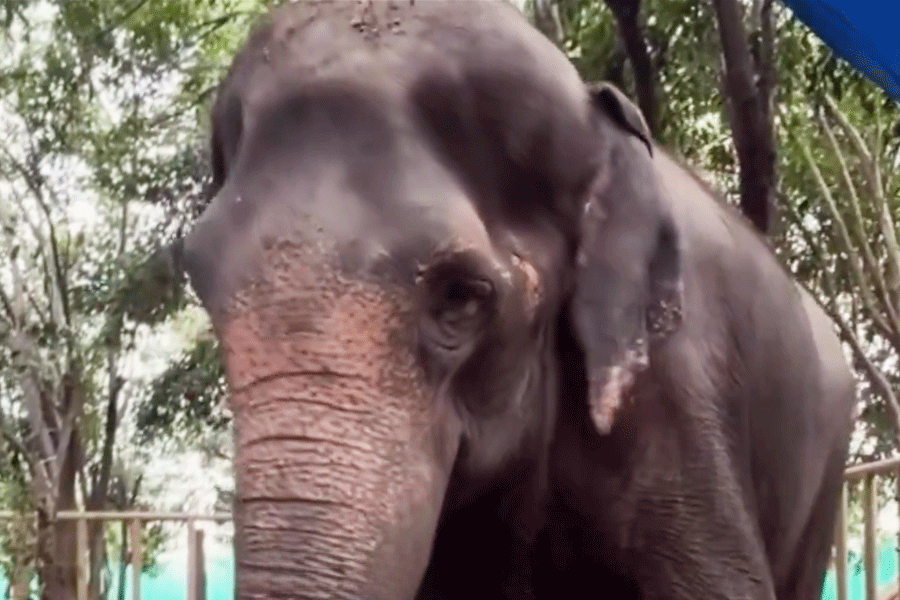

Calcutta: In the world of exotic caged parrots, money talks before the bird does.
The blue eclectus parrot, a breed born out of a rare genetic mutation and priced upwards of Rs 20 lakh for a single bird, is apparently the latest fancy of private collectors in this part of the world.
Three blue eclectus parrots, one of them the more flamboyant male of the species, were found in the boot of a car that customs officials had intercepted on the Kalyani Expressway on June 27.
Four pairs of African pygmy falcons, three red-and-blue macaws and seven white ducks were confiscated during the same operation.
The birds, smuggled into North 24-Parganas from Bangladesh, were being taken to a buyer in another state when officials of the Directorate of Revenue Intelligence, the intelligence wing of the customs department, rescued them. The pricey parrots have since been spending a potentially less demanding life at the Alipore zoo hospital.
According to wildlife officials, most of the rescued birds would be worth a few lakhs in the illegal market. The blue eclectus, of course, is what even collectors with deep pockets would call an indulgence.
The Wildlife Crime Control Bureau does not officially put a price on a smuggled bird, though. Agni Mitra, the regional deputy director (east) of the bureau, said the agency was against estimating the monetary worth of any wild animal or bird as a matter of policy.
Another official said there was a ready market for the blue eclectus. "This bird is considered extremely precious in collector and breeder circles. But there is no off-the-shelf price. The price is decided through a one-to-one negotiation between the buyer and the seller."
Once a buyer places an order with a breeder, the waiting period could range between four and five years. A US-based website, birdbreeders.com, has pegged the price of an "extremely rare and absolutely stunning BLUE Eclectus" at $22,000 (Rs 15.18 lakh).
The three persons arrested for smuggling the blue eclectus parrots that were rescued on June 27 have been identified as middlemen. "The birds would have changed hands in multiple states before reaching the final buyer," a customs official said.
The trio have been booked under the Customs Act, 1962. They could not be charged under the Indian Wildlife Protection Act because it is applicable only to indigenous species. Eclectus parrots are native to Indonesia, Papua New Guinea, the Solomon Islands and Australia.
Blue eclectus parrots - the turquoise male is the size of a cockatoo and wears gorgeous blue streaks offset by an orange beak - are coveted because they not only look brilliant but also make good pets, according to a collector.
A paper in the journal of the American Federation of Aviculture traces the ownership of the first blue eclectus parrots to a European couple. The couple had purchased a pair of eclectus parrots sometime in the Nineties that went on to beget a male and a female. The siblings were separated from their parents and kept in another aviary, but a mishap was waiting to happen.
"It just so happened that an old nest box was hanging in that aviary and the owners never thought or bothered to take it down. At two years of age, 'mother nature' took over and the brother and sister pair went to nest and laid two fertile eggs. When the chicks started feathering, the breeder noticed that one of the birds, the hen, was very unusual in colour. She was blue and grey. Thus, the first blue eclectus was hatched in 1995. Since then, two more blues have been bred, including one magnificent-looking blue cock," states the paper by Roger Bringas, published in 2001.
According to birdwatcher Sujan Chatterjee, the blue varieties continue to be bred only in captivity. "Mutation-coloured birds usually cannot survive in the wild because their colour singles them out and makes them vulnerable to many predators."











